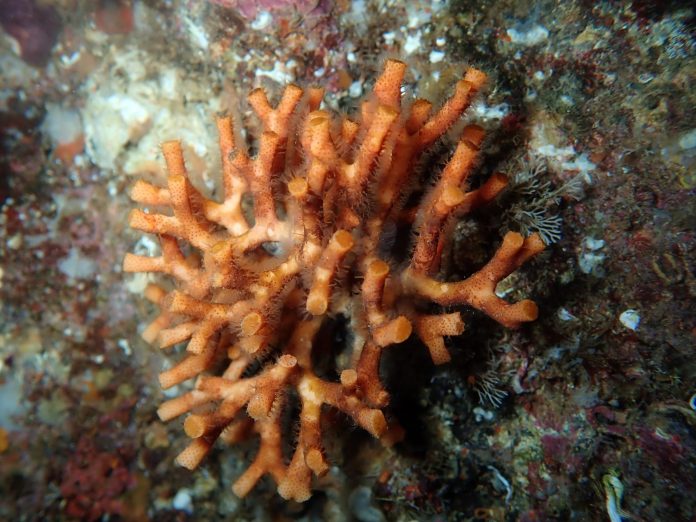The Hidden Architects of the Sea: What’s Happening to Bryozoans in a Warming Ocean?
Hey there! Have you ever thought about what lies beneath the Mediterranean waves? While most of us are focusing on the big, flashy fish or the colorful corals, there are tiny marine creatures called bryozoans that, though small, play a huge role in our oceans. They might do their work quietly, but they are crucial to maintaining healthy marine ecosystems. Recently, scientists have noticed they are under serious stress due to climate change. Let’s dive into what’s going on and why it matters!
Who Are Bryozoans and Why Are They Important?
So, what exactly are bryozoans? Imagine tiny architects building intricate homes underwater; that’s what these little invertebrates do! They create structures that provide shelter for all sorts of marine life—much like corals, but sadly, they don’t get nearly as much attention.
One type of bryozoan, known scientifically as Myriapora truncata (often called “false coral”), is found throughout the Mediterranean. They grow into three-dimensional frameworks, forming habitats that many marine creatures rely on. Think of them as the apartment buildings of the ocean!
Climate Change is Taking its Toll
A team at the Institut de Ciències del Mar (ICM-CSIC) recently published some concerning findings. Using volcanic CO₂ vents in Italy as natural laboratories, researchers simulated future ocean conditions. They discovered that climate change is causing significant issues for bryozoans.
The combination of ocean acidification and warming is changing their structure, mineral content, and even their microbial communities—the tiny, almost invisible organisms that live on and within them. When these marine architects get stressed, it doesn’t just affect them; it impacts entire ecosystems.
The Study: What’s Happening Underwater
Led by researcher Blanca Figuerola, the study shed light on the microbiome of Myriapora truncata. In simpler terms, this research was like pulling back the curtain on how these tiny creatures respond to their increasingly hostile environment.
The team noticed that while bryozoans can adapt to some degree, the stress from acidification and warming can have long-lasting effects. Even though some may appear healthy on the outside, there could be hidden dangers inside. Changes in their microbiome might serve as early warnings of environmental problems. It’s like an illness that doesn’t show immediately.
The Impact of Microbial Changes
Microbes are crucial for the health of any organism. They help with nutrition and offer defense against diseases. But in this study, scientists found a decreasing variety of these helpful microbes. The loss of diversity could jeopardize the health of bryozoans, making them even more vulnerable to external stressors.
Javier del Campo, another researcher, emphasized the importance of monitoring these microbial shifts. If bryozoans are struggling, what does that mean for other marine life that depends on them? It’s a bit like watching a chain reaction in a crowded domino setup; when one piece falls, others can quickly follow.
Warming Waters: Intensifying the Effects
Over five years, the researchers tracked how rising ocean temperatures paired with acidification. The findings were alarming. Increased temperatures worsened the negative effects observed in bryozoan populations, leading to reduced growth and higher mortality rates. For these organisms, the combination of both stressors becomes a double whammy that their traditional adaptations can’t keep up with.
What Can Be Done?
As frightening as these findings are, they also point to a need for conservation and research. As bryozoans face these hurdles, their potential disappearance could lead to serious consequences for many other marine species relying on them for shelter and food.
The ongoing research will investigate ways to boost the resilience of these marine organisms. By doing so, maybe we can equip them to withstand the challenges of climate change. The hope is not just to protect bryozoans but also to secure the overall health of marine ecosystems.
Community and Conservation: Why You Should Care
You might be wondering, why should you care about these tiny creatures? Well, think of bryozoans as critical base players in the ocean. If they start failing, the whole marine community—fish, crustaceans, and even corals—might face dire consequences. Fewer habitats mean fewer fish. And if we care about fishing or just enjoying the beauty of the ocean, we also care about how healthy these little architects are.
The lessons here aren’t just about marine biology. They highlight our interconnectedness on this planet. Protecting the ocean means protecting the tiny creatures that play essential roles in its health. When we neglect these “invisible” parts of the ecosystem, we are paving the way for big problems in the future.
Conclusion: A Call to Action
As we sit back and enjoy the wonders of the ocean, let’s not forget the hidden heroes that keep it alive—like bryozoans. The work being done by researchers is crucial. They’re not just examining sea life; they’re giving us an early warning about the health of our oceans.
From what we’ve learned, it’s clear that climate change is a significant threat to these small yet vital creatures. As stewards of our planet, it’s up to all of us to pay attention and advocate for change. Let’s support efforts to protect marine ecosystems and push for solutions that tackle climate change.
So next time you think about the ocean, remember the little guys—the bryozoans. They may be small, but their impact is anything but! Together, let’s ensure our oceans remain vibrant and healthy for future generations.
Feel free to join discussions about marine conservation in your communities or schools. Your voice can help raise awareness, making a difference one conversation at a time!

